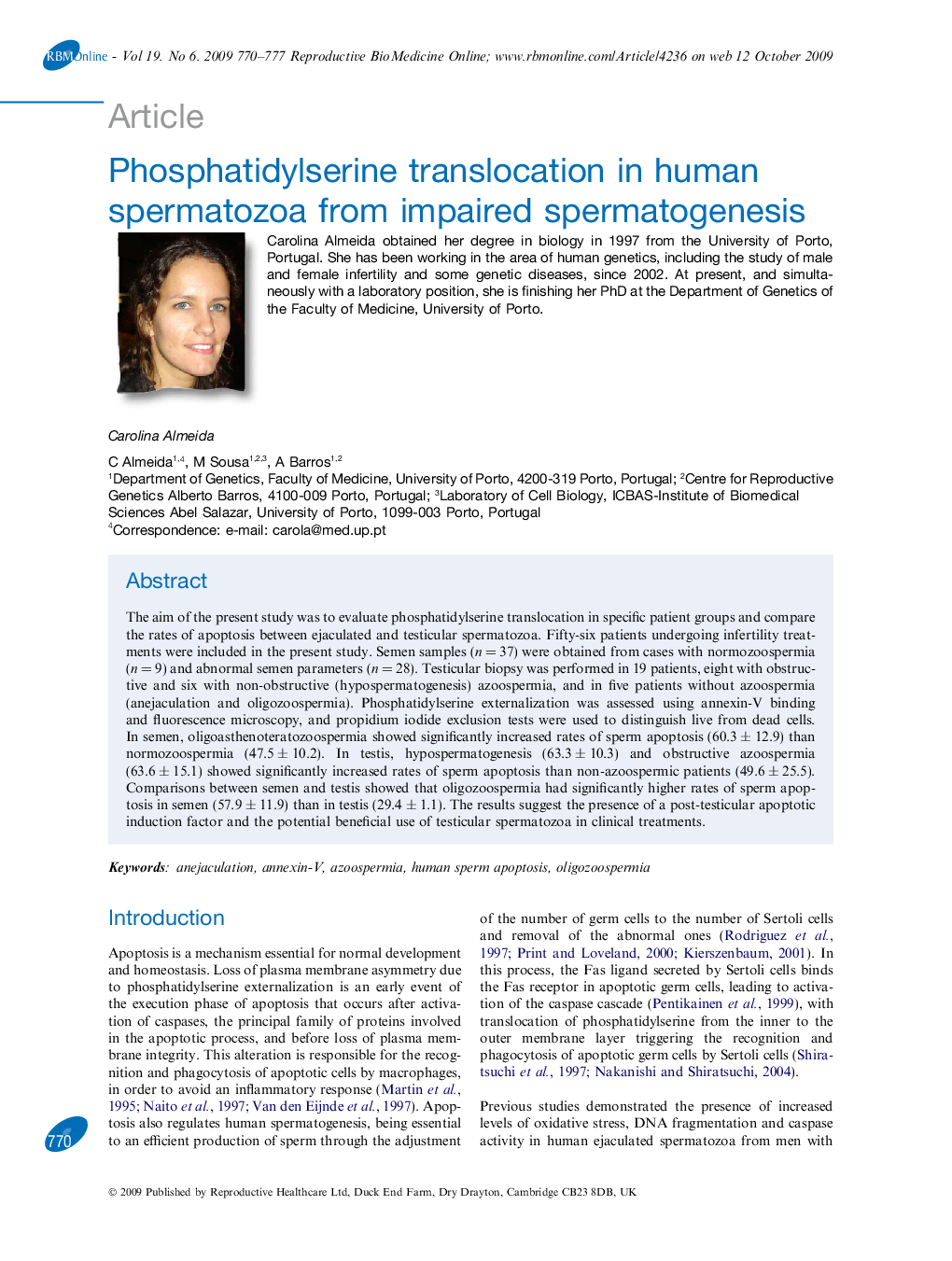| کد مقاله | کد نشریه | سال انتشار | مقاله انگلیسی | نسخه تمام متن |
|---|---|---|---|---|
| 3972232 | 1256798 | 2009 | 8 صفحه PDF | دانلود رایگان |

The aim of the present study was to evaluate phosphatidylserine translocation in specific patient groups and compare the rates of apoptosis between ejaculated and testicular spermatozoa. Fifty-six patients undergoing infertility treatments were included in the present study. Semen samples (n = 37) were obtained from cases with normozoospermia (n = 9) and abnormal semen parameters (n = 28). Testicular biopsy was performed in 19 patients, eight with obstructive and six with non-obstructive (hypospermatogenesis) azoospermia, and in five patients without azoospermia (anejaculation and oligozoospermia). Phosphatidylserine externalization was assessed using annexin-V binding and fluorescence microscopy, and propidium iodide exclusion tests were used to distinguish live from dead cells. In semen, oligoasthenoteratozoospermia showed significantly increased rates of sperm apoptosis (60.3 ± 12.9) than normozoospermia (47.5 ± 10.2). In testis, hypospermatogenesis (63.3 ± 10.3) and obstructive azoospermia (63.6 ± 15.1) showed significantly increased rates of sperm apoptosis than non-azoospermic patients (49.6 ± 25.5). Comparisons between semen and testis showed that oligozoospermia had significantly higher rates of sperm apoptosis in semen (57.9 ± 11.9) than in testis (29.4 ± 1.1). The results suggest the presence of a post-testicular apoptotic induction factor and the potential beneficial use of testicular spermatozoa in clinical treatments.
Journal: Reproductive BioMedicine Online - Volume 19, Issue 6, December 2009, Pages 770–777